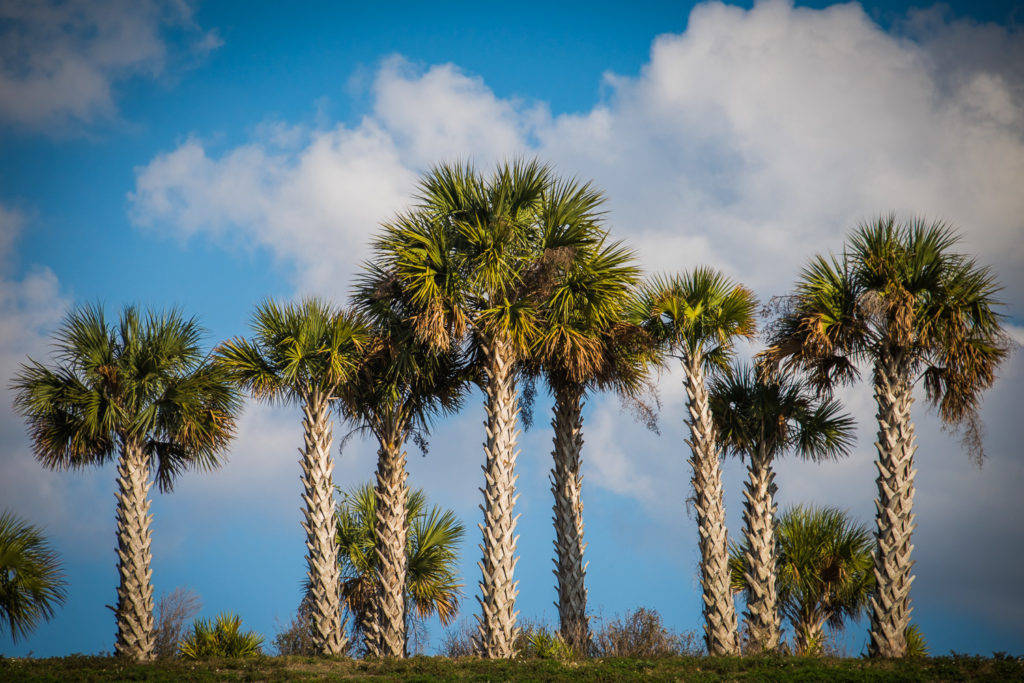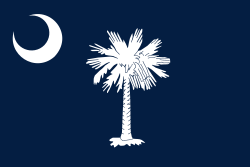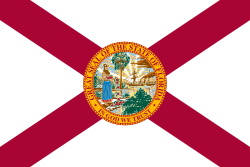
This sturdy and versatile tree, with its distinctive fan-shaped fronds, is an iconic fixture in the landscape of the Sunshine State. From the sprawling Everglades to the bustling urban centers, the Cabbage Palm stands as a testament to the resilience and beauty of Florida’s native flora.
A Versatile Icon
The Cabbage Palm, also called the Sabal Palm, is more than just a tree; it is a symbol of Florida’s natural heritage. This palm is incredibly adaptive, thriving in a variety of habitats from coastal dunes and sandy soils to swamps and hardwood forests. Its ability to withstand salt spray, flooding, and drought makes it a true survivor in the often harsh and unpredictable Florida environment.
Physical Characteristics
One cannot help but marvel at the Cabbage Palm’s physical attributes. It can grow up to 65 feet tall, with a trunk that’s typically about a foot in diameter. The trunk is unbranched and marked with the scars of old leaf bases, giving it a rough, textured appearance. The tree’s crown is a rounded canopy of large, fan-shaped leaves that can stretch up to six feet long.
The leaves are a lush green and radiate from a central point at the top of the trunk. Each leaf is composed of numerous stiff leaflets, creating a fan-like structure that is both aesthetically pleasing and functionally effective at capturing sunlight. These fronds not only provide shade but also contribute to the tree’s ability to photosynthesize efficiently, even in the bright, direct sunlight typical of Florida.
Ecological Importance
The Cabbage Palm plays a crucial role in Florida’s ecosystems. Its leaves provide habitat for various species of birds, insects, and small mammals. Birds such as woodpeckers, owls, and ospreys often nest in the crannies formed by the leaf bases, while insects like beetles and ants find shelter in the leaf litter that accumulates at the base of the trunk.
Moreover, the Cabbage Palm’s flowers and fruits are vital food sources for wildlife. The small, creamy-white flowers bloom in large clusters and attract a myriad of pollinators, including bees and butterflies. Following the flowering period, the tree produces small black fruits that are eagerly consumed by birds and other animals. These fruits are particularly important during the late summer and fall when other food sources may be scarce.
Human Uses
Historically, the Cabbage Palm has been an essential resource for both indigenous peoples and early settlers in Florida. The heart of the palm, also known as “swamp cabbage” or “heart of palm,” is edible and has been used as a food source for centuries. This delicacy, harvested from the inner core of the tree, can be eaten raw, cooked, or pickled and is known for its mild, nutty flavor.
In addition to its culinary uses, the Cabbage Palm has been employed in various practical applications. The sturdy fronds were traditionally used by Native Americans to thatch roofs, weave baskets, and create mats. The trunks, resistant to rot and decay, were used as pilings for docks and wharves, a testament to the tree’s durability and usefulness.
Cultural Significance
The Cabbage Palm is deeply ingrained in the cultural identity of Florida. It is the state tree of both Florida and South Carolina, a recognition of its importance to the region. Its image is commonly found on everything from state seals and flags to commercial logos and public art installations. This palm is not just a tree; it is a symbol of the tropical allure and the rugged beauty of the southeastern United States.
Conservation and Management
Despite its hardiness, the Cabbage Palm faces challenges in the modern landscape. Urban development, habitat destruction, and the spread of invasive species pose significant threats to its populations. Conservation efforts are essential to ensure the survival of this iconic tree.
Land management practices that protect and restore natural habitats are crucial. This includes preserving wetlands, coastal areas, and forests where the Cabbage Palm thrives. Additionally, controlling invasive species that compete with native plants for resources is vital. Public education and awareness campaigns can also help in promoting the value of the Cabbage Palm and the need to conserve Florida’s natural heritage.
A Personal Encounter
Allow me to share a personal anecdote that illustrates the profound connection many Floridians have with the Cabbage Palm. On a warm spring morning, I set out for a hike in the Myakka River State Park, a sprawling wilderness that showcases the diverse habitats of central Florida. As I ventured deeper into the park, I found myself surrounded by a dense grove of Cabbage Palms.
The air was filled with the hum of insects and the calls of birds, all harmonizing in a natural symphony. I paused to observe a pair of red-shouldered hawks nesting high in the canopy of a particularly tall Cabbage Palm. The tree’s sturdy fronds provided a secure platform for the nest, and the hawks seemed perfectly at home amidst the greenery.
As I continued my hike, I came across an old homestead site, long abandoned but still bearing the marks of human habitation. The remnants of a thatched roof, constructed from Cabbage Palm fronds, stood as a silent testament to the resourcefulness of the early settlers who had once called this place home. It was a poignant reminder of the enduring relationship between humans and nature, and the pivotal role that the Cabbage Palm has played in that dynamic.
Conclusion
In conclusion, the Cabbage Palm is more than just a tree; it is a symbol of Florida’s rich natural heritage and resilience. From its ecological importance to its historical uses and cultural significance, the Cabbage Palm stands as a testament to the enduring beauty and utility of Florida’s native flora. As we continue to navigate the challenges of the modern world, it is imperative that we recognize and protect the invaluable contributions of this iconic tree to our environment and our way of life.
Whether you are a seasoned naturalist or a casual observer, the next time you encounter a Cabbage Palm, take a moment to appreciate its strength, beauty, and the countless ways it enriches our lives. In doing so, you honor not only the tree itself but also the intricate tapestry of life that it supports and the timeless connection we share with the natural world.
Sabal palmetto
Sabal palmetto (/ˈseɪbəl/, SAY-bəl), also known as cabbage palm,[5] cabbage palmetto,[3] sabal palm, palmetto palm, blue palmetto,[3] Carolina palmetto,[6] common palmetto,[6] and swamp cabbage,[7] is one of 15 species of palmetto palm. It is native to the Southeast United States, the Yucatán Peninsula in Mexico, the West Indies, and the Bahamas.
Description
Sabal palmetto grows up to 24 m (80 ft) tall, with the tallest on record measuring at 93 feet tall.[8] Starting at half to two-thirds the height, the tree develops into a rounded, costapalmate fan of numerous leaflets. A costapalmate leaf has a definite costa (midrib), unlike the typical palmate or fan leaf, but the leaflets are arranged radially like in a palmate leaf. All costapalmate leaves are about 5 mm (1⁄4 in) across, produced in large compound panicles up to 2.5 m (8 ft) in radius, extending out beyond the leaves. The fruit is a black drupe about 1.3 cm (1⁄2 in) long containing a single seed. It is extremely salt-tolerant and is often seen growing on the coastal plain and along the coast of the Atlantic Ocean and the Gulf of Mexico.[5]
-
Sabal palmetto from Carl Friedrich Philipp von Martius's Historia naturalis palmarum
-
S. palmetto on Virginia Beach, Virginia
-
S. palmetto in Enterprise, Alabama
-
S. palmetto growing near the South Carolina state capitol in Columbia
-
S. palmetto in the Canaveral National Seashore, Florida
-
S. palmetto in beach habitat, Manasota Key, Florida
-
Wild specimens
-
Bootjacks
-
S. palmetto 'Lisa' in Fort Myers, Florida

Distribution and habitat
Sabal palmetto is native to the subtropical coastal regions of the American states of Florida, Georgia, South Carolina, southeastern North Carolina, and extreme southern Texas. It is also cultivated elsewhere in the Southeastern US, in some areas of southeastern Virginia, southwestern Alabama, and southeastern Mississippi.[9] It can also be found alongside Cuba's northern coast (from Havana to Matanzas),[10] the Turks and Caicos, the Yucatán Peninsula in Mexico, and the Bahamas.[10][11][12]
The species is hardy to the US Department of Agriculture's zone 8a, and has been reported to have some cold hardness down to 8.6 °F or −13.0 °C, but needs hot and humid summers to grow well. Maintenance of the cabbage palm tree is very easy and very adaptable. The cabbage palmetto is known to tolerate drought, standing water and brackish water. Even though this palm is drought-tolerant, it thrives on regular light watering and regular feeding. It is highly tolerant of salt winds, but not saltwater flooding.[13]
Cultivation
Sabal palmetto[14] is a popular landscape plant in the subtropical climates of the Gulf and south Atlantic states, mostly from coastal regions of North Carolina to Florida.[14][15] Sabal palm is used extensively around beach and resort areas along the lower East Coast because of its tolerance of salt spray and drought.[15] Because of their relatively long establishment period and prevalence on southern ranchlands, few, if any are grown from seed in nurseries.[16] Instead, established plants are dug in the wild with small rootballs since virtually all the severed roots die and must be replaced by new roots in the new location.[15] Most leaves are removed during transplanting to reduce transpiration. Cabbage palms have excellent hurricane resistance, but are frequently overpruned to supposedly lower wind loads.[16] Sabal palm seed germination excels in hot and humid summer climates.[15]
Most references rate the species as hardy to USDA hardiness zone 8b.[15] A small number of specimens are cultivated beyond the typical regions sabal is known to be cultivated in, including parts of Tennessee, northern Virginia, and along the middle Atlantic coast from Maryland[17] to coastal New Jersey and coastal Connecticut. A long term specimen (covered with frost cloth in winter) grows in favorable microclimate (zone 7a/b) at the University of Bridgeport CT since 2009.
The cabbage palm is remarkably resistant to fire, floods, coastal conditions, cold, high winds, and drought.[18] Despite this, mortality has been caused by Texas phoenix palm decline (now known as Lethal Bronzing Disease), a phytoplasma found on the west coast of Florida in 2006.[19]
Sabal palmetto trunks appear in two different conditions, which can be confusing (see photo). When leaves die, the leaf bases typically persist for a while, creating a spiky, "basketweave" effect. These remnant leaf bases are called "bootjacks" or "boots", for short. The name stems from the "Y" shape that was reminiscent of devices used to aid individuals in removing boots. Transplanted palms are sometimes deliberately shorn of these bootjacks. Taller specimens are more likely to have lost their bootjacks and appear relatively smooth and columnar. The loss of bootjacks is a natural, if poorly understood, phenomenon, as the palm does not create a leaf abscission zone so the loss of the leaf bases results from some other physical or biological process.
In 1998, a new mutant form of S. palmetto was discovered in southwest Florida, and named as a cultivar, Sabal palmetto 'Lisa'. This cultivar has unusually thick and leathery, largely fused leaflets that give the palm a unique and appealing appearance. Over 60% of the seedlings have the same leaf characteristics as the parent plant and Sabal palmetto 'Lisa' has been popularized in the nursery trade in Florida over the last 20 years and proven to be as resistant to heat, wind, cold, drought, and neglect as the common form while keeping its shape.[20]
Uses
The growing heart of the new fronds, also known as the terminal bud, gives the tree its "cabbage" name, since this is extracted as a food and tastes like other undifferentiated plant meristem tissue, such as the heart of a cabbage or artichoke. It is one of several palm species that are sometimes used to make heart of palm salad. Heart of palm was commonly eaten by Native Americans.[21] However, extracting the heart kills this species of palm, because the terminal bud is the only point from which the palm can grow, so without this bud, the palm is not able to replace old leaves and eventually dies.
The cabbage-like terminal bud has been eaten as hearts of palm. The bristles on the sheaths of young leaves have been made into scrubbing brushes. The trunks have been used as wharf piles. On June 28, 1776, Charleston patriots under William Moultrie made a fort of palmetto trunks and from it defended successfully against the British in the Revolutionary War.[22]
The fruit is edible raw, and the seeds can be ground into flour.[23]
Culture
The sabal palmetto is the official state tree of both Florida and South Carolina (the latter is nicknamed "The Palmetto State").
The annual football rivalry game between Clemson and South Carolina is known as the "Palmetto Bowl".
A silhouette of S. palmetto appears on the official flag of the US state of South Carolina.[24] The seal of South Carolina also depicts the sabal palmetto.
An image of a palmetto appears on the back of South Carolina's state quarter, which was issued in 2000.
Two images of S. palmetto appear on the official great seal of the State of Florida[25] and the flag of Florida.
-
seal of South Carolina
-
Flag of South Carolina
-
Seal of Florida
-
Flag of Florida
See also
References
- ^ Carrero, C. (2021). "Sabal palmetto". IUCN Red List of Threatened Species. 2021: e.T87709255A87709290. doi:10.2305/IUCN.UK.2021-1.RLTS.T87709255A87709290.en. Retrieved 18 November 2021.
- ^ "NatureServe Explorer 2.0. Sabal palmetto". explorer.natureserve.org.
- ^ a b c "Sabal palmetto". Germplasm Resources Information Network. Agricultural Research Service, United States Department of Agriculture. Retrieved 2014-03-22.
- ^ Kew World Checklist of Selected Plant Families
- ^ a b Flora of North America: Sabal palmetto
- ^ a b Wade, Dale D.; Langdon, O. Gordon (1990). "Sabal palmetto". In Burns, Russell M.; Honkala, Barbara H. (eds.). Hardwoods. Silvics of North America. Vol. 2. Washington, D.C.: United States Forest Service (USFS), United States Department of Agriculture (USDA). Retrieved 2014-03-22 – via Southern Research Station.
- ^ James M. Stephens (1994). "Cabbage, Swamp — Sabal palmetto (Walt.) Lodd ex Schult. & Schult.f., Fact Sheet HS-571" (PDF). University of Florida, Florida Cooperative Extension Service.
- ^ "Sabal Palm (U.S. National Park Service)". www.nps.gov. Retrieved 2024-04-03.
- ^ Weakley, Alan S. (24 April 2022). "Flora of the Southeastern United States" (PDF). University of North Carolina at Chapel Hill Herbarium. p. 319.
- ^ a b Van Deelen, Timothy R. 1991. Sabal palmetto. In: Fire Effects Information System, [Online]. U.S. Department of Agriculture, Forest Service
- ^ Zona, S. (1990). "A monograph of Sabal (Arecaceae: Coryphoideae)". Aliso. 12 (4). Rancho Santa Ana Botanic Garden: 583–666. doi:10.5642/aliso.19901204.02.
- ^ Biota of North America Program 2014 county distribution map
- ^ "Real Palm Trees". Palm Tree General Description. Archived from the original on 2010-10-25. Retrieved 2008-11-23.
- ^ a b "Sabal palmetto (Walt". www.srs.fs.usda.gov. Retrieved 2024-05-23.
- ^ a b c d e "ENH-733/ST575: Sabal palmetto: Sabal or Cabbage Palm". Ask IFAS - Powered by EDIS. Retrieved 2025-05-22.
- ^ a b "ENH1279/EP543: Regenerated Sabal/Cabbage Palms (Sabal palmetto): Why and How". Ask IFAS - Powered by EDIS. Retrieved 2025-05-22.
- ^ sheffields.com. "- Price per 1 packet". Sheffields Seeds Online Ltd. Retrieved 2025-05-22.
- ^ "Cabbage Palmetto". Retrieved March 4, 2024.
- ^ "PP243/PP163: Lethal Bronzing Disease (LB)". Ask IFAS - Powered by EDIS. Retrieved 2025-05-22.
- ^ "A new cultivar of Sabal palmetto" (PDF). Palm Tree General Description. Archived from the original (PDF) on 2009-07-08. Retrieved 2010-01-06.
- ^ "Sabal Palm (U.S. National Park Service)". www.nps.gov. Retrieved 2024-03-05.
- ^ Peattie, Donald Culross. Trees You Want to Know. Whitman Publishing Company, Racine, Wisconsin, 1934. p36
- ^ The Complete Guide to Edible Wild Plants. United States Department of the Army. New York: Skyhorse Publishing. 2009. p. 74. ISBN 978-1-60239-692-0. OCLC 277203364.
{{cite book}}: CS1 maint: others (link) - ^ Netstate, South Carolina State Flag
- ^ The Great Seal of the State of Florida
External links
- United States Department of Agriculture Plants Profile for Sabal palmetto (cabbage palmetto)
- Sabal palmetto from Floridata
- Interactive Distribution Map for Sabal palmetto Archived 2012-03-04 at the Wayback Machine
- Chisholm, Hugh, ed. (1911). . Encyclopædia Britannica. Vol. 20 (11th ed.). Cambridge University Press. p. 649.












